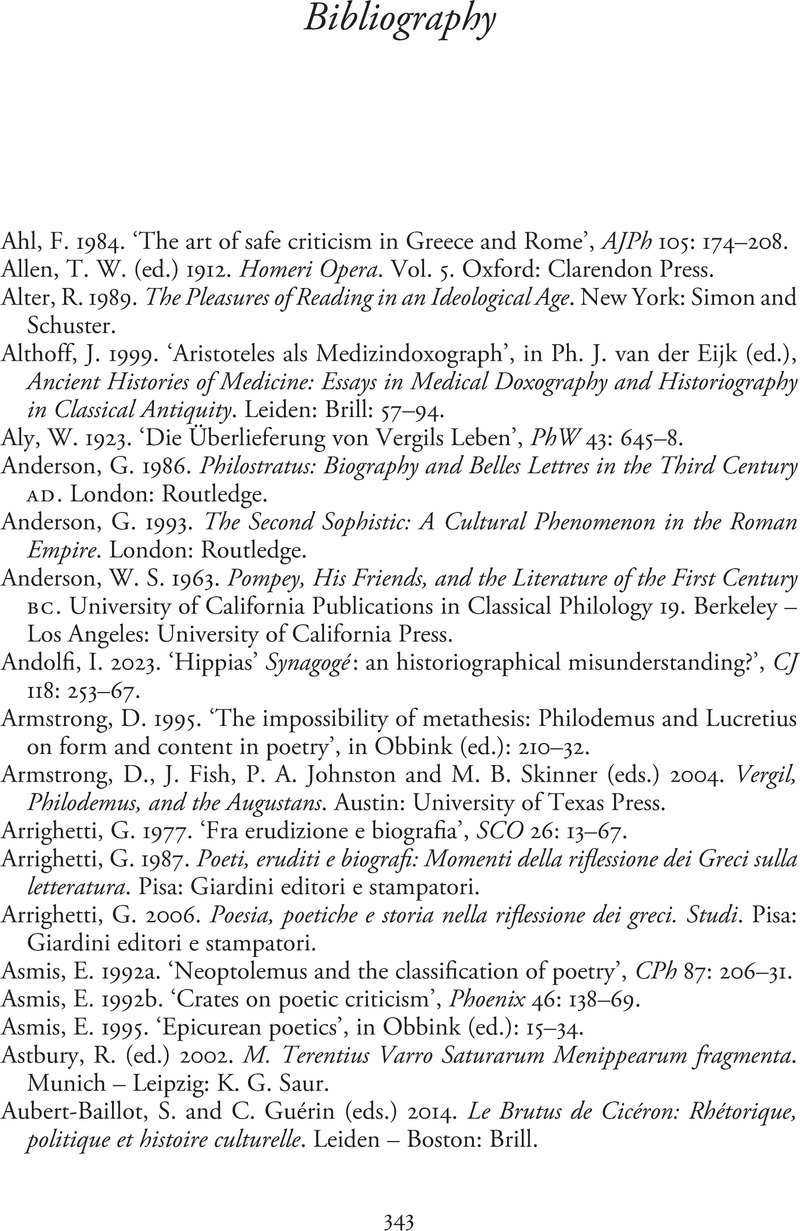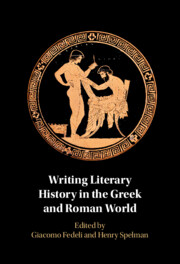Book contents
- Writing Literary History in the Greek and Roman World
- Writing Literary History in the Greek and Roman World
- Copyright page
- Contents
- Contributors
- Introduction
- Part I Between Literature and Scholarship
- Part II Lives and Afterlives
- Part III Narratives of Change
- Epilogue
- Afterword
- Bibliography
- Index Locorum
- Index of Subjects
- References
Bibliography
Published online by Cambridge University Press: aN Invalid Date NaN
- Writing Literary History in the Greek and Roman World
- Writing Literary History in the Greek and Roman World
- Copyright page
- Contents
- Contributors
- Introduction
- Part I Between Literature and Scholarship
- Part II Lives and Afterlives
- Part III Narratives of Change
- Epilogue
- Afterword
- Bibliography
- Index Locorum
- Index of Subjects
- References
Summary

- Type
- Chapter
- Information
- Writing Literary History in the Greek and Roman World , pp. 343 - 379Publisher: Cambridge University PressPrint publication year: 2024



